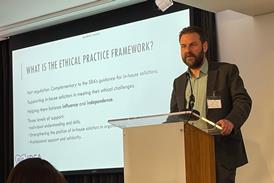Over a year has passed since a crucial rule change aimed at channelling prospective family financial remedy and children matters into non-court dispute resolution. On 29 April 2024, the Family Procedure Rules 2010 Part 3 and Part 28 were changed for this purpose and the protocol annexed to FPR Practice Direction 9A was updated. Background to the changes can be found here.

In children matters, the president of the Family Division drafted letters to be sent to parents and carers when they make an application. It includes: ‘Why court is usually not the best choice.’ It explains the importance of mediation and what mediation is.
Of course, mediation is not the only form of non-court dispute resolution (NCDR). The changes widened the meaning of NCDR to include the likes of collaborative law, arbitration and early neutral evaluation.
Under Practice Direction 3A and rule 4.1, the court now has a general power to adjourn proceedings for NCDR to be attempted, including attendance at a mediation information and assessment meeting (MIAM) to consider family mediation and other options.
Also introduced last year was the power to make a costs order for any failure by a party, without good reason, to attend a MIAM or NCDR, rule 28.3(7).
I have taken a keen interest in these developments and asked my fellow family law practitioners what have been their experiences of the changes. Have they seen the court adjourning cases for the purpose of NCDR? Have they seen costs orders? The answers that I have been given don’t show a great leap forward. Of course, this is only anecdotal evidence. I therefore set about further investigation.
My opportunity came when the president spoke at the Resolution conference which I attended in May. After his speech, I approached Sir Andrew McFarlane and asked him how he understood the NCDR changes had taken hold. I was disappointed by his answer which was that he didn’t really know. After all, he asked, how could one measure the impact.
I have thought about the president’s answer. Of course, one could not expect busy judges to keep score of matters they might adjourn for NCDR. However, I think that it would be possible to measure in another way. This is because, seven days before the first 'on notice' hearing, the parties are required to complete and file a form FM5 statement of position. Amongst other things, the FM5 specifically asks the litigant to explain why they are seeking a court order if they have not attended NCDR. Surely copies of these forms could be assessed and counted? Whilst, of course, there would be a cost to this, and we know that there is no magic money tree, surely judicial assistants could assist in some of the data inputting?
Does it really matter whether or not we know if the new era for NCDR has arrived? I submit that it does. In October to December 2024, the number of financial remedy applications was up 5%. More than 130,000 children were involved in the family court system in 2023 and data for March 2024 showed that families were waiting almost a year on average for decisions to be made. Things are so bad in the family court system that the House of Commons’ public accounts committee is about to embark on an inquiry of it. We really do need to keep matters out of the family court.
Tony Roe is a family law partner at Dexter Montague LLP, an arbitrator, collaborative lawyer and mediator working towards accreditation































No comments yet